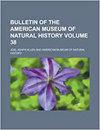苏拉威西岛14种特有的鼩鼱新种揭示了壮观的岛屿辐射
IF 3.4
2区 环境科学与生态学
Q1 BIODIVERSITY CONSERVATION
Bulletin of the American Museum of Natural History
Pub Date : 2021-12-15
DOI:10.1206/0003-0090.454.1.1
引用次数: 11
摘要
摘要:在对苏拉威西岛小型陆生哺乳动物进行近十年的实地调查后,我们将形态学特征的定性和定量分析与分子系统发育相结合,以更好地了解岛上鼩鼱(鼩鼱科:鼩鼱目)的多样性。我们检查了1368个标本的形态学,并从其中许多标本中获得了广泛的分子数据,包括来自851个标本的线粒体DNA序列,来自657个标本的5个核外显子,以及来自90个标本的数千个超保守元素。通过使用不同的特征数据集和适当的分类单元抽样来反复测试物种限制,我们发现苏拉威西岛上有21种鼩鼱存在的明确且基本一致的证据,其中只有7种是以前认识的。我们将这21种划分为5个形态群,对先前命名的7种进行了修正诊断,并描述了14种新种。长尾组包括长尾鳄梨新种、长尾鳄梨新种、微长尾鳄梨新种和准长尾鳄梨新种;Rhoditis组包括C. Rhoditis、C. pseudorhoditis新种、C. australis新种、C. pallida新种;小体类群包括C. lea、C. levicula、C. baletei新种、C.平庸新种、C. parva新种、C. tenebrosa新种;厚尾组包括短尾c新种和尾尾c新种;普通类群包括musseri、C. nigripes、C. normalis新种、C. ordinaria新种、C. solita新种。对这些特有物种的记录揭示了一种局部辐射(21种中有20种是特有枝的成员),在这种辐射中,海拔梯度在促进物种形成或至少促进表型相似物种的共生方面发挥了突出作用。据目前所知,苏拉威西岛Crocidura鼩鼱的物种多样性几乎是已知其他岛屿鼩鼱动物群多样性的三倍。这项研究强调了这样一个事实,即如果我们希望了解地球上生物多样性的真实程度,那么在热带山区,即使是对哺乳动物等据称研究得很好的群体,也迫切需要大规模的、有凭证的生物清单,并对遗传、形态和地理特征进行彻底的检查。本文章由计算机程序翻译,如有差异,请以英文原文为准。
Fourteen New, Endemic Species of Shrew (Genus Crocidura) from Sulawesi Reveal a Spectacular Island Radiation
ABSTRACT After nearly a decade of field inventories in which we preserved voucher specimens of the small terrestrial mammals of Sulawesi, we combined qualitative and quantitative analyses of morphological traits with molecular phylogenetics to better understand the diversity of shrews (Soricidae: Crocidura) on the island. We examined the morphology of 1368 specimens and obtained extensive molecular data from many of them, including mitochondrial DNA sequences from 851 specimens, up to five nuclear exons from 657 specimens, and thousands of ultraconserved elements from 90 specimens. By iteratively testing species limits using distinct character datasets and appropriate taxon sampling, we found clear, mostly consistent evidence for the existence of 21 species of shrews on Sulawesi, only seven of which were previously recognized. We divide these 21 species into five morphogroups, provide emended diagnoses of the seven previously named species, and describe 14 new species. The Long-Tailed Group contains Crocidura caudipilosa, C. elongata, C. microelongata, new species, and C. quasielongata, new species; the Rhoditis Group contains C. rhoditis, C. pseudorhoditis, new species, C. australis, new species, and C. pallida, new species; the Small-Bodied Group contains C. lea, C. levicula, C. baletei, new species, C. mediocris, new species, C. parva, new species, and C. tenebrosa, new species; the Thick-Tailed Group contains C. brevicauda, new species and C. caudicrassa, new species; and the Ordinary Group contains C. musseri, C. nigripes, C. normalis, new species, C. ordinaria, new species, and C. solita, new species. Documenting these endemic species reveals a local radiation (20 of the 21 species are members of an endemic clade) in which elevational gradients played a prominent role in either promoting speciation, or at a minimum, fostering the cooccurrence of phenotypically similar species. As now understood, the species-level diversity of Crocidura on Sulawesi is nearly three times the known diversity of any other insular shrew fauna. This study highlights the fact that if we wish to understand the true extent of biodiversity on Earth, large-scale, vouchered organismal inventories followed up with thorough examinations of genetic, morphological, and geographic traits are sorely needed in montane tropical regions, even for purportedly well-studied groups such as mammals.
求助全文
通过发布文献求助,成功后即可免费获取论文全文。
去求助
来源期刊
CiteScore
7.90
自引率
2.90%
发文量
4
审稿时长
>18 weeks
期刊介绍:
The Bulletin, published continuously since 1881, consists of longer monographic volumes in the field of natural sciences relating to zoology, paleontology, and geology. Current numbers are published at irregular intervals. The Bulletin was originally a place to publish short papers, while longer works appeared in the Memoirs. However, in the 1920s, the Memoirs ceased and the Bulletin series began publishing longer papers. A new series, the Novitates, published short papers describing new forms.

 求助内容:
求助内容: 应助结果提醒方式:
应助结果提醒方式:


